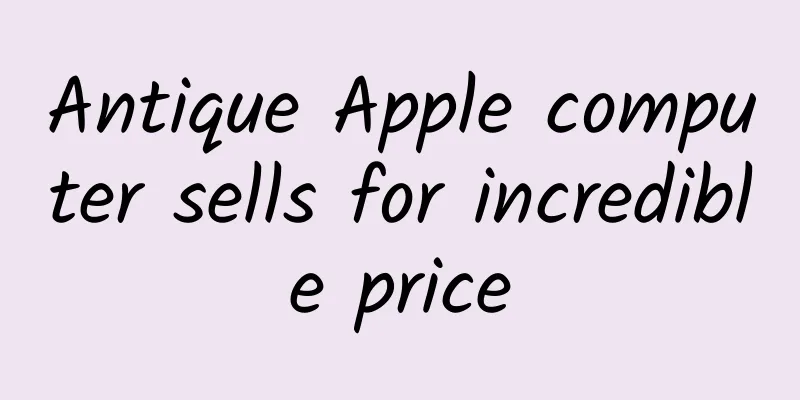8 attempts to introduce you to iOS lean programming

|
Opening Today, we will start with a small function and implement it without thinking. Product Repository: Filtering Operation Code start There is a product library, we want to filter it. The first requirement is not complicated. Requirement 1: Find all products in the warehouse that are red First Attempt: Hard Code Let's first implement it in the simplest way, hard coding
If the world were eternally static, this would be understandable, but the world is often not like this. Then, the second requirement came Requirement 2: Find all green products in the warehouse Second Attempt: Parameterizing Copy-Paste is the most common mistake made by most programmers, which introduces a lot of duplicate code.
In order to eliminate hard coding and obtain reusable code, simple parameterized design can be introduced.
Finally, I can rest assured. How can our product manager make you feel comfortable at this time? Requirement 3 is here again. Requirement 3: Find all products whose weight is less than 10 Third Attempt: Parameterizing with Every Attribute You Can Think Of Most programmers still use Copy-Paste to solve this problem. To avoid the bad habit of Copy-Paste, the most effective feedback is to disable this shortcut key, so that you can remind yourself to make better designs every time you try Copy-Paste.
In order to eliminate duplicate code between the two, simple parameterization often cannot completely solve such problems. On the contrary, it will introduce excessive complexity and incidental costs.
In daily work, this implementation method is very common. The parameter list of the function continues to increase as the demand increases, the function logic assumes more and more responsibilities, and the logic becomes more and more difficult to control. Designs that respond to changes through parameter configuration are often failed designs It is easy to lead to complex logic control, causing additional accidental complexity Forth Attempt: Abstracting over Criteria To do this, abstraction is needed so that the traversal algorithm and search criteria can change independently without affecting each other.
At this point, the filter's algorithm logic is closed. Of course, the function name needs to be renamed to make its algorithm implementation more universal.
Encapsulate various changes through reusable classes to keep the factors of change within the smallest range.
The user interface has also become much simpler and more expressive.
This is a classic OO design. Readers who are familiar with design patterns are already accustomed to it. Design patterns are good things, but they are often abused. For this reason, we cannot copy them rigidly, but introduce design patterns to get a simpler design. This process is very natural. I talked to the masters and asked them why the design pattern was introduced here. The answer I got was: intuition. Forget all the design patterns. It doesn’t matter if it is a pattern or not. If the design is simple, it is a pattern. There is also an obvious bad smell. Both ColorSpec and BelowWeightSpec need to inherit ProductSpec, both need to define a constructor and a private field, and override the satisfy method, which are full of repeated structures. Do you think the current writing method is sufficient? Don't worry, let's take a look at the next requirement Requirement 4: Find all products whose color is red and whose weight is less than 10
There are two obvious bad smells: Naming containing "and" is often a signal that violates the single responsibility principle. There is an obvious duplication between the implementation of ColorAndBelowWeightSpec and ColorSpec,BelowWeightSpec At this point, we need to find a more essential abstraction to express the design, and/or/not semantics can best solve this type of problem. Composite Spec: AndSpec, OrSpec, NotSpec Atomic Spec: ColorSpec, BeblowWeightSpec
The requirement can be met by combining ColorSpec and BelowWeightSpec through AndSpec, which is simple, beautiful and expressive.
But there are two serious drawbacks to this design: There is obvious code duplication between AndSpec and OrSpec. The first intuition of OO design is to eliminate duplication by extracting base classes.
A large number of initialization methods are dazzling
DSL can be introduced to improve the readability of the program and make the code more expressive. Let's start by adding some DSL:
This is how our code looks like
Blocks can be used to improve designs and enhance expressiveness.
The code now looks like this
Construct DSL and reuse these blocks
You can also use the standard library
Finish That's all for today's coding. This article was originally written by Horance, and I will implement it using OC. If we are not iOS Developers, there are still other attempts, such as generics. |
<<: These ten IT jobs are the easiest. Where do you rank?
>>: Why I don't like working at a mainstream tech company
Recommend
Why has JavaScript become the first choice for many mini-programs?
[[256303]] Since Baidu first proposed the concept...
Good looks are still useful! Embryo beauty contest: Embryo appearance and selection
Author: Fu Jing, Chief Physician of Shanghai Jiai...
Big news for Xiaohongshu! Slow delivery, suspected fakes, no way to return, Xiaohongshu flooded with complaints
Recently, the "China E-Commerce Complaint an...
Apple recognizes Android's status Cook: Google has a dominant operating system in the world
Who is the world's number one mobile phone sy...
How to bring about conversions by building an operation system and channel diversion?
1. What is operation in your mind? The operation ...
Insights | Only by keeping calm can you achieve great things
Famous Artists Gallery | Grice, a Russian painter...
How do social apps play with “relationships between men and women”? Let’s take a look at these nine dimensions.
social contact? Hook up? In the eyes of many peop...
Foreign automakers call on China to relax electric vehicle sales quota system
In a June 18 email to Miao Wei, China's Minist...
Xiaomi will lose the patent war? Where does Ericsson get the confidence from?
"May 21st". This is probably one of the...
How to make an event planning plan? Event planning skills!
Activities are a means to quickly achieve specifi...
How to make an idea for app promotion?
The Internet population dividend has disappeared,...
The first person to eat spicy noodles has been found! But this "national snack" is really recommended to be eaten less
Audit expert: Zhou Jiaojiao Associate Professor, ...
How to write a competitive proposal so that users will choose your product?
Some time ago, the P2P industry experienced a sma...
Artificial Intelligence in AR
In March this year, the Shanghai Municipal Commis...
Revealing the secrets of Apple’s official iPhone data cable: expensive and poor quality!
Apple’s hardware quality is very good, but there ...

![[Creative Cultivation Program] Is there any scientific basis for the claim that spanking can improve IQ?](/upload/images/67f265d8d2f16.webp)







